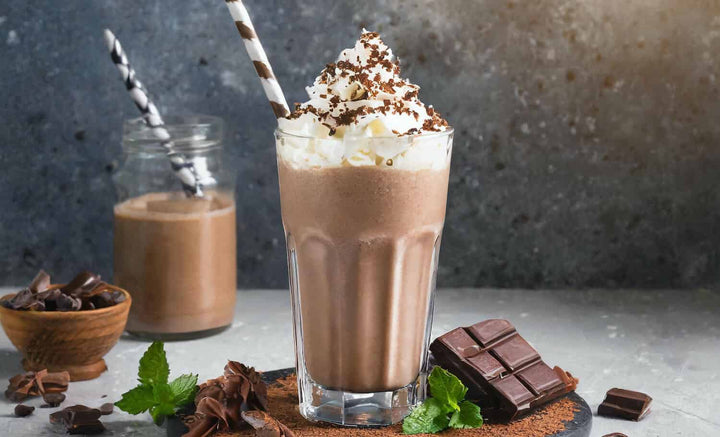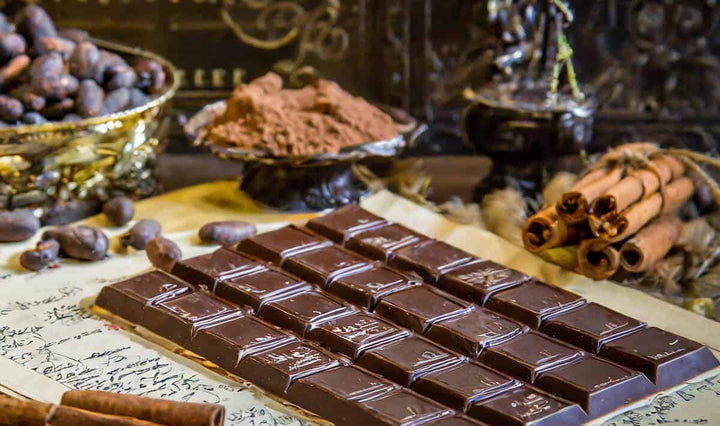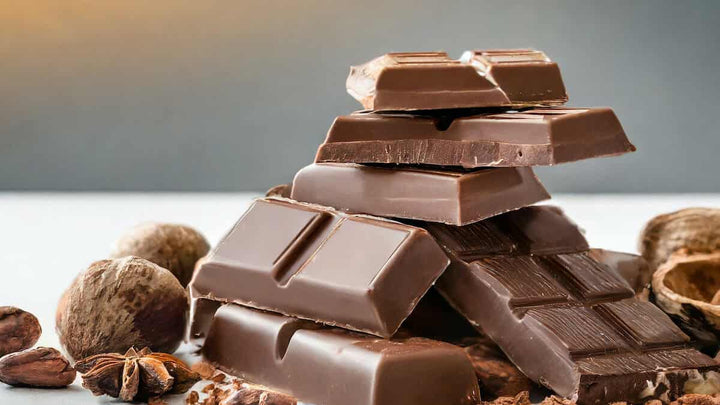Are you ready to embark on a delicious adventure through history?
Today, we will discover the incredible story of one of the world's favourite treats: chocolate!
From ancient rainforests to your local sweet shop, chocolate has made an extraordinary journey to be with us today.
Long ago, before chocolate bars and ice cream, people found something special in the tropical rainforests.
What they found wasn't sweet or milky, but it was the beginning of the chocolate we know and love.
Join us as we travel back in time to uncover the secrets of chocolate – who discovered it, how it was first enjoyed, and how it transformed into the yummy treat that makes us smile today.
Prepare for a tale filled with ancient civilisations, royal courts, adventurous explorers, and ingenious inventors.
Our journey through the history of chocolate is not just about food but about cultures, discoveries, and changes that turn a bitter bean into a sweet sensation.
A Brief History of Chocolate For Kids
Chocolate's journey began over 3,000 years ago with the Mayans and Aztecs, who enjoyed it as a bitter drink.
It reached Europe in the 1500s through Spanish explorers, where it became a luxury for the rich.
The 1800s saw the invention of solid chocolate bars, making chocolate more accessible to everyone.
Today, chocolate is loved worldwide in many delicious forms.
Let's look at this fascinating history in more detail:
1. Around 1500 BC: The journey begins in the tropical rainforests of Central and South America with the ancient Olmec civilisation.
They are believed to be the first to discover the cacao tree and realise that the seeds (cacao beans) could be used to make a chocolate drink.
2. 600 AD: The Mayans inherit this chocolate tradition from the Olmecs.
They consider chocolate a gift from the gods and use cacao beans not just to make a special drink but also as currency and in religious ceremonies.
3. 1200-1500 AD: The Aztecs took over from the Mayans and cherished chocolate, believing it gave strength and wisdom.
But only the rich and powerful can afford it because cacao trees don't grow in Aztec lands, making beans very precious.
4. 1502: Christopher Columbus, a famous explorer, encounters cacao beans on his fourth voyage to the New World but doesn't realise their value.
5. 1519: Hernán Cortés, another explorer, arrives in Aztec territory and is served chocolate by Emperor Montezuma.
He brings cacao beans to Spain, where sugar and honey are added to improve the drink's bitter taste.
6. 1600s: Chocolate becomes a fashionable drink among the European elite.
It's still a luxury item enjoyed mainly by royalty and the wealthy.
7. 1700s: Chocolate houses become popular in Europe, similar to today’s coffee shops.
Meanwhile, the invention of machines makes it easier to produce chocolate, gradually reducing its cost and making it more available to everyone.
8. 1828: Coenraad van Houten, a Dutch chemist, invents the cocoa press.
This device helps remove the fat from cacao beans, making chocolate smoother and cheaper.
This invention leads to the creation of solid chocolate.
9. 1847: In England, Joseph Fry discovers how to make a mouldable chocolate paste by adding melted cacao butter back into Dutch cocoa.
This leads to the creation of the first chocolate bar.
10. 1860s: Richard Cadbury, from the famous Cadbury family, improves Fry’s method and begins packaging and selling the first boxes of chocolate candies in England.
11. 1875: Daniel Peter invented milk chocolate in Switzerland with the help of Henri Nestlé, who developed a way of making powdered milk.
This new kind of chocolate quickly becomes popular all over the world.
12. 20th Century: Chocolate becomes a treat for everyone, not just the rich.
New inventions and improvements in manufacturing make chocolate even more popular and accessible.
13. Today: Chocolate is enjoyed worldwide in countless forms and flavours, from chocolate bars to hot cocoa, from fancy truffles to fun chocolate-shaped figures.
And the story of chocolate continues as new types and tastes are developed for us all to try!
So there you have it – a brief but sweet journey through the history of chocolate.
From ancient drinks to modern treats, chocolate has been making history for thousands of years!

What is the Future of Chocolate?
The future of chocolate is an exciting and dynamic topic, shaped by trends in consumer preferences, sustainability efforts, and technological advancements.
As we look ahead, several key themes are likely to influence the direction of the chocolate industry:
-
Sustainability and Ethical Sourcing: With growing awareness of environmental issues and social responsibility, the future of chocolate will increasingly focus on sustainable farming practices and ethical sourcing of cacao. Consumers are becoming more conscious of where their food comes from and its impact on the planet and communities.
-
Health and Well-being: There is a growing trend towards health-conscious eating; chocolate is no exception. The future will likely see an increase in demand for chocolates with reduced sugar, organic ingredients, and added health benefits, such as dark chocolate with a high percentage of cocoa, known for its antioxidants.
-
Flavour Innovations: As palates become more adventurous, the chocolate industry is expected to continue exploring unique and unconventional flavour combinations. This could include incorporating exotic fruits, spices, and savoury elements into chocolate products.
-
Technological Advances: Technology will play a significant role in shaping the future of chocolate, from the farming and fermentation processes to production and packaging. Advances in technology may lead to more efficient production methods, reducing waste and improving the quality of chocolate.
-
Consumer Engagement: The future of chocolate will also see brands engage more deeply with consumers, tell the story behind their products, and offer transparency about their sourcing and manufacturing processes.
The future of chocolate holds many opportunities for innovation and growth, balanced with challenges that will require a focus on sustainability, health, and ethical practices.
As we move forward, the chocolate industry must adapt to these evolving trends to meet consumers' changing demands while ensuring our planet's and its people's well-being.

Where Can You Buy Tasty Chocolate?
Whitakers Chocolates, renowned for our long history in crafting delicious and affordable chocolates, offers a range of options suitable for everyone, including vegetarian, vegan, and gluten-free choices.
Our top-selling products, such as indulgent Coffee Creams, Neapolitans, Chocolate Wafer Thins, Stem Ginger and Luxury Chocolate Truffles, are perfect for enhancing your mocha coffee experience.
Click here to see our full range of delicious chocolates…
Some Notes From an Expert Chocolatier
As an expert chocolatier, I've observed firsthand the challenges and opportunities within the chocolate industry, particularly the rising costs of cocoa and the unprecedented demand for chocolate worldwide.
The cost of cocoa is a critical issue that directly affects production costs and pricing strategies.
The pressure on cocoa resources intensifies as demand continues to soar, driven by a growing global appreciation for high-quality chocolate and an increasing interest in artisan and bespoke products.
This scenario presents a complex challenge: balancing the need for sustainable, ethical sourcing with the economic realities of chocolate production.
The surge in demand should ideally lead to better living conditions and practices for cocoa farmers.
However, the reality is often more complicated, highlighting the importance of sustainable initiatives and fair trade practices.
From my experience, addressing these issues requires innovation, commitment, and collaboration between chocolatiers, farmers, and consumers.
It's about creating a value chain where everyone benefits – from the soil to the end product.
As chocolatiers, we play a pivotal role in shaping the future of chocolate, crafting not only delightful experiences but also contributing to the well-being of our global community and environment
Final Notes On the History of Chocolate for Children
The journey of chocolate from the ancient rainforests to your favourite sweet shop is a fascinating story filled with adventure, innovation, and cultural exchange.
What started as a sacred drink among ancient civilisations has transformed into the delicious chocolate treats we all love today.
Through this journey, chocolate has been a symbol of luxury, a source of comfort, and a medium for artistic expression.
Remember, whenever you unwrap a chocolate bar or enjoy a piece of chocolate cake, you taste a piece of history that spans thousands of years and miles.
The story of chocolate is not just about a sweet treat; it's about human ingenuity, cultural traditions, and our connection to the natural world.
So, the next time you savour a piece of chocolate, think about the incredible journey it has taken to bring that moment of joy into your life.
And who knows?
As the world of chocolate continues to evolve, maybe one day, you, too, could be part of its ongoing, delicious story.













1 comment
Great post, my kids loved it! They love chocolate but only get it as a nice treat.